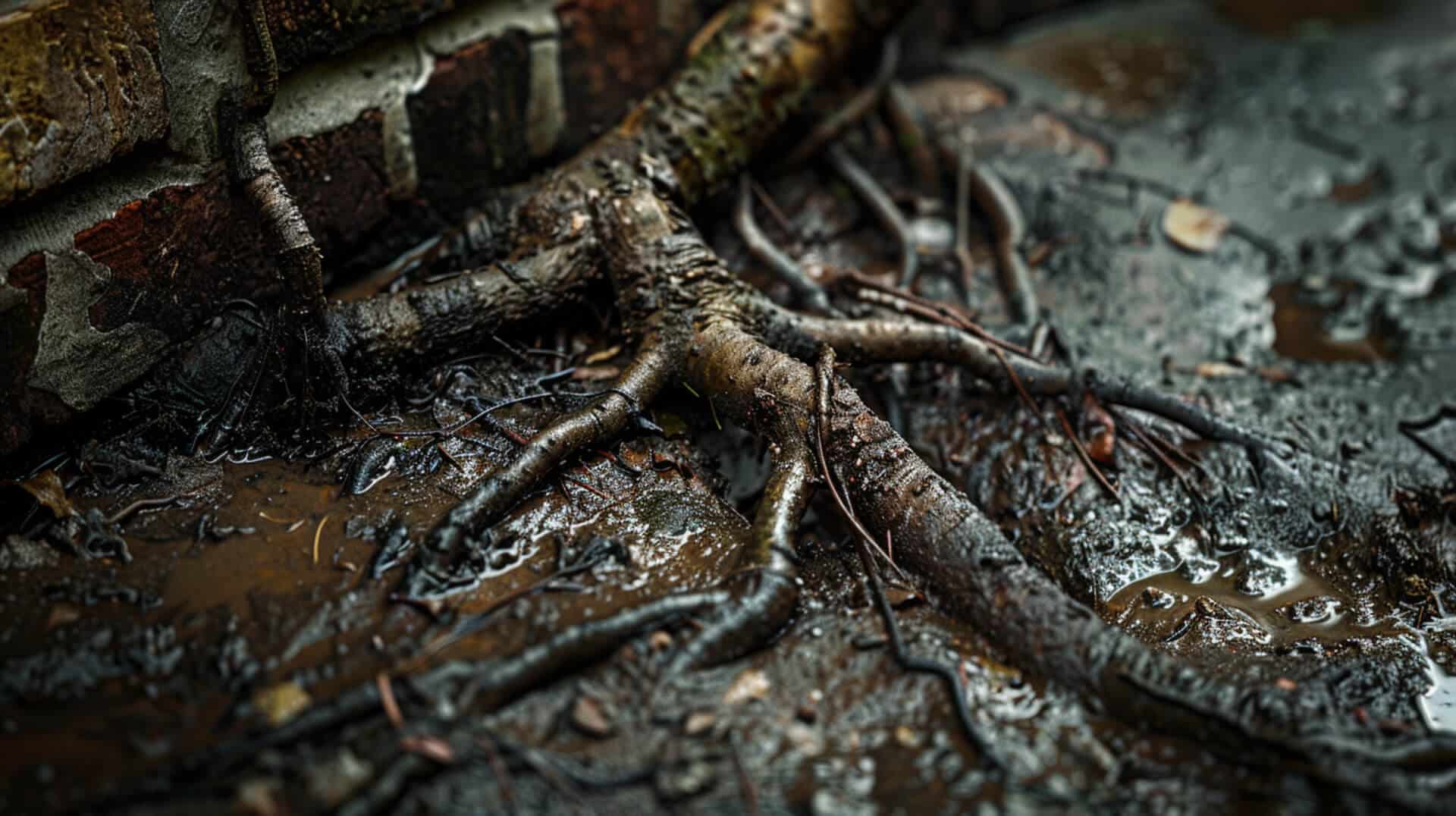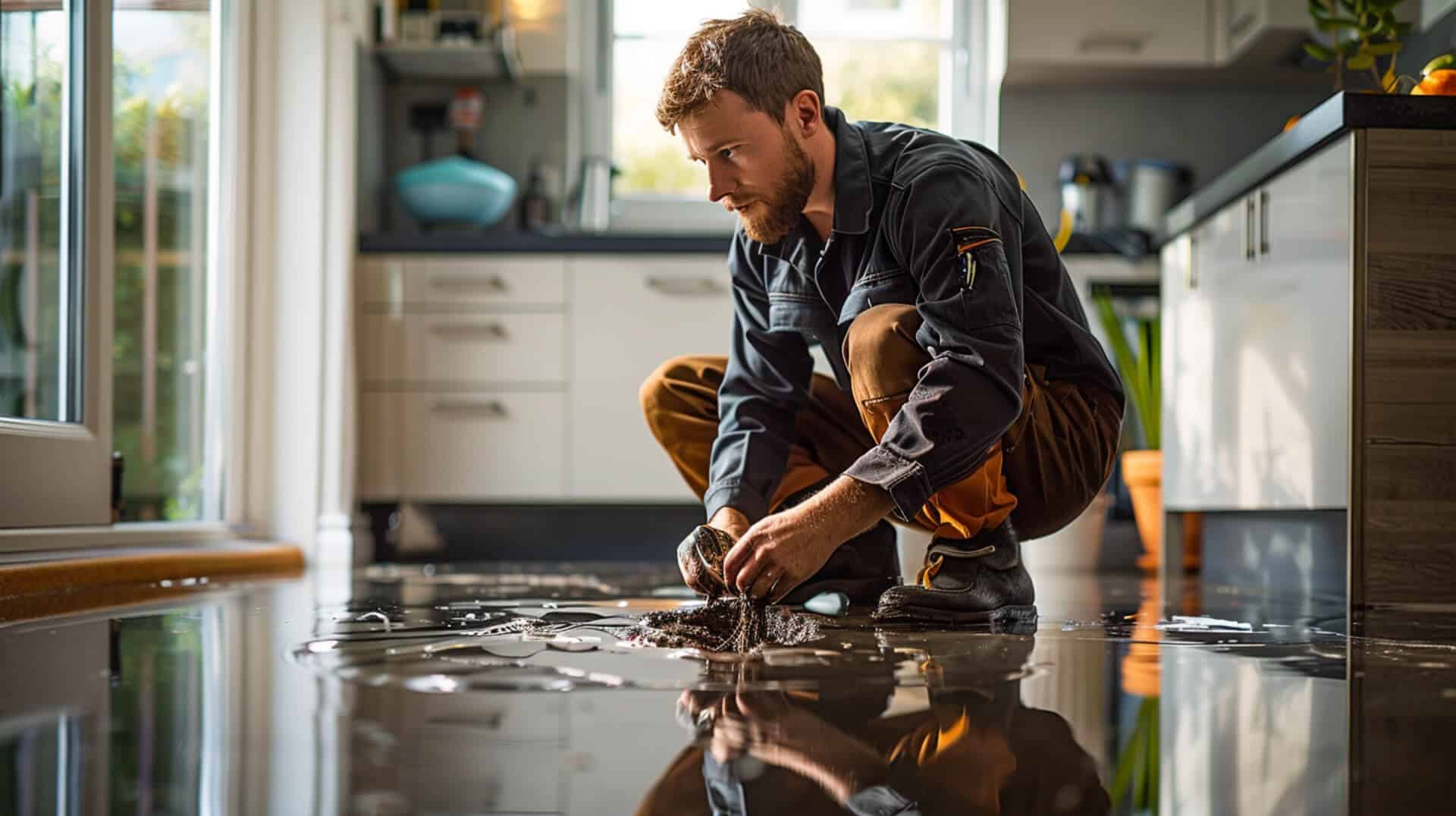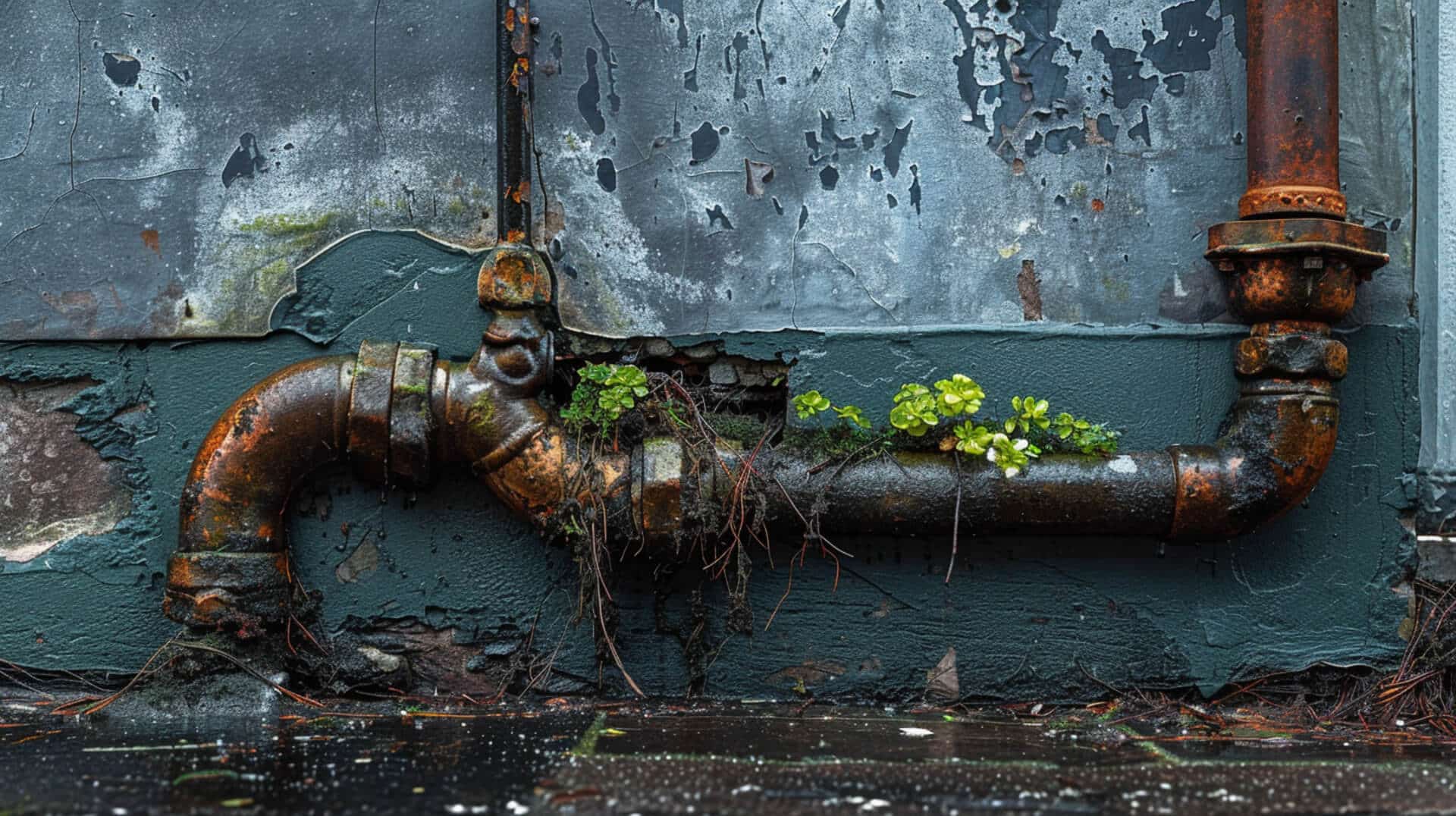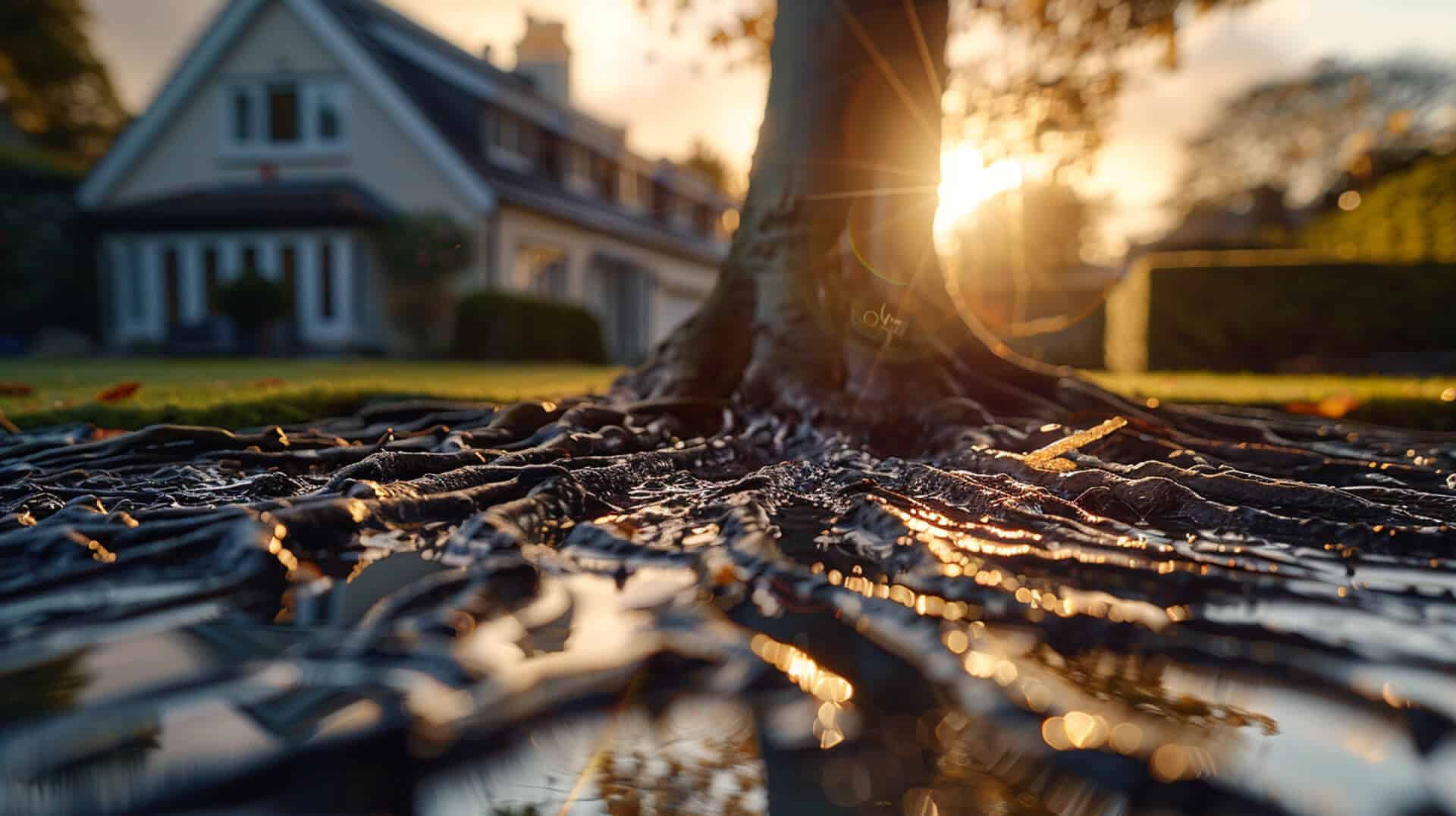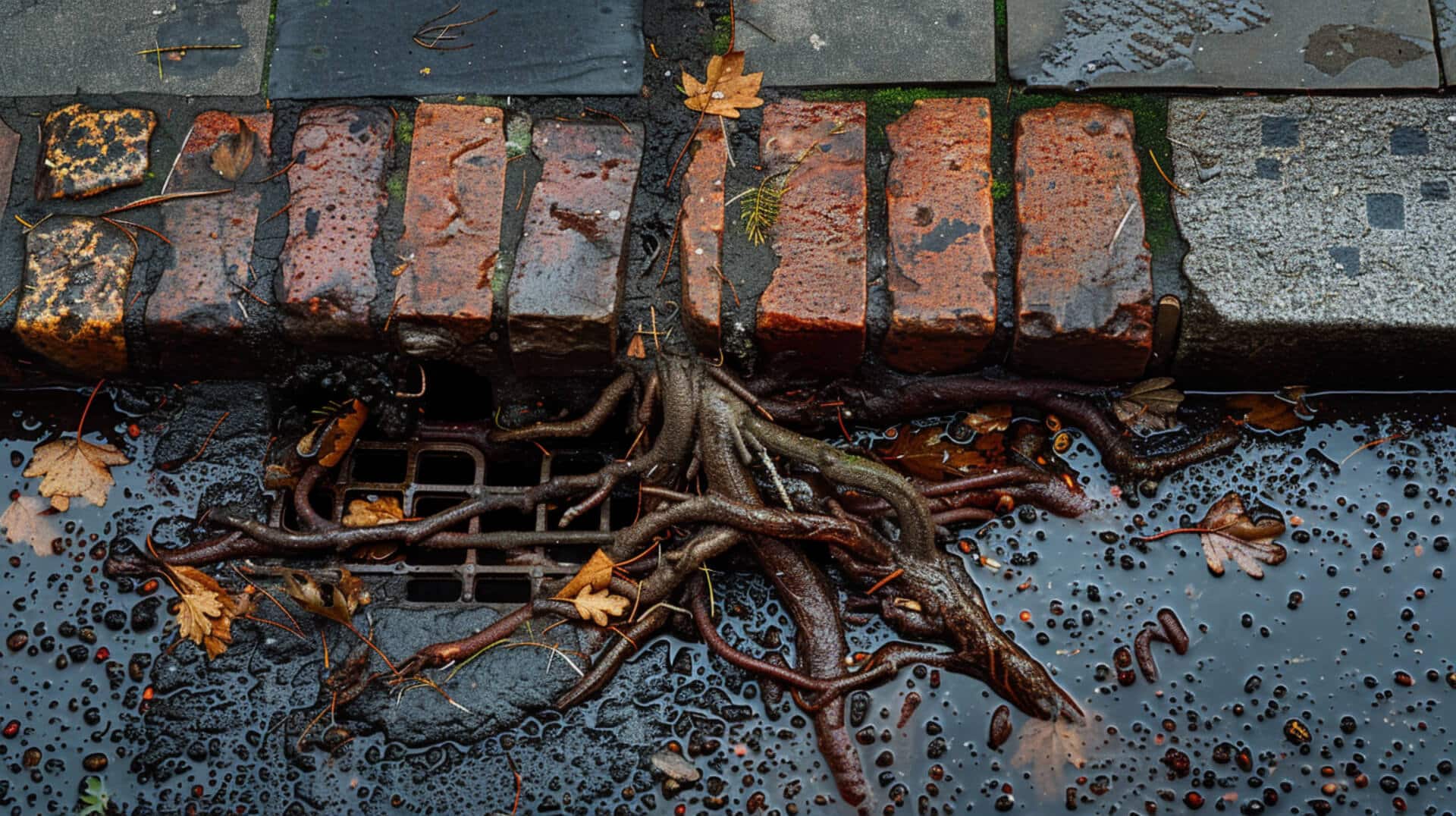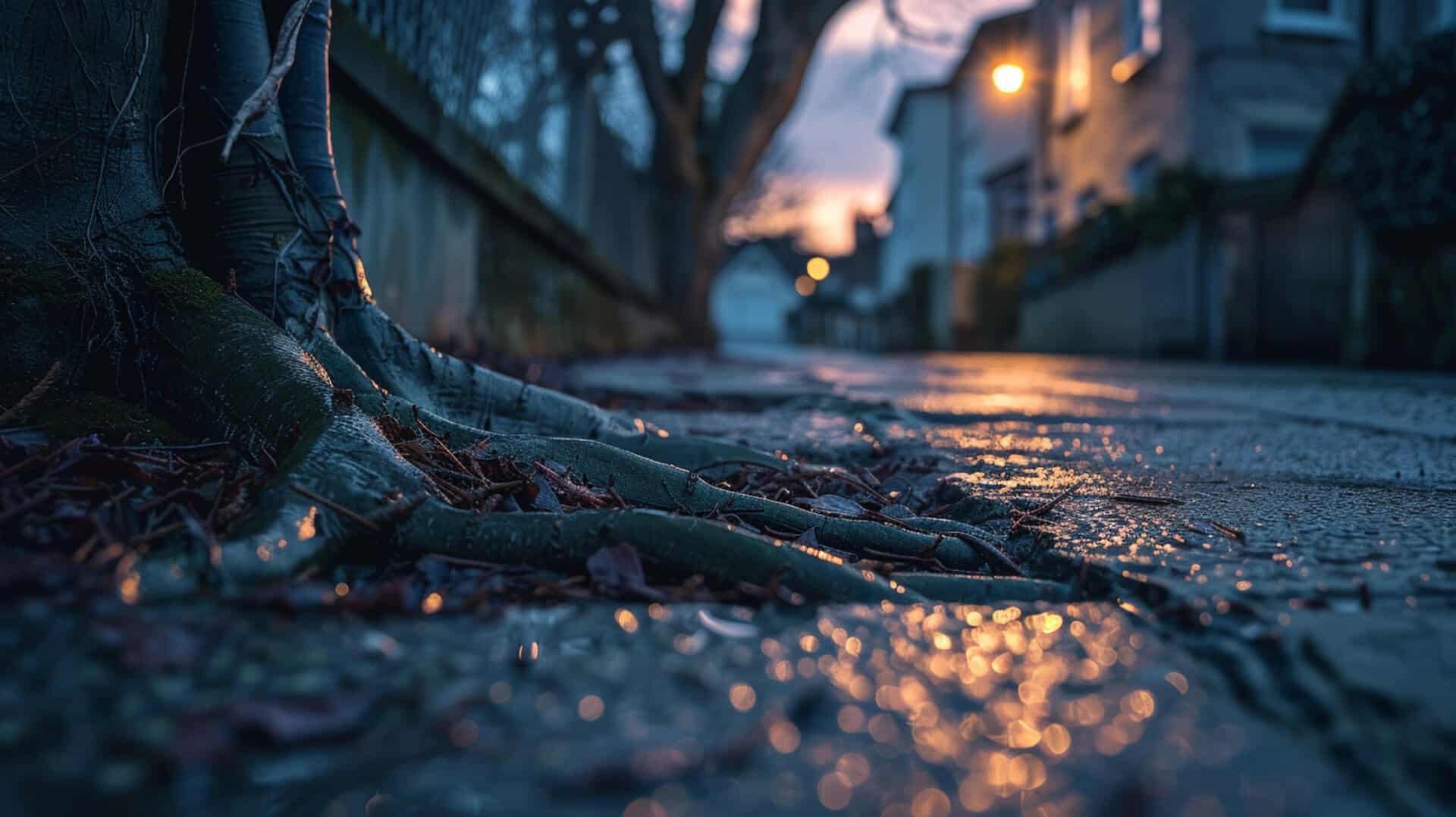 What Problems Can A Drain Root Intrusion Survey Identify
What Problems Can A Drain Root Intrusion Survey Identify
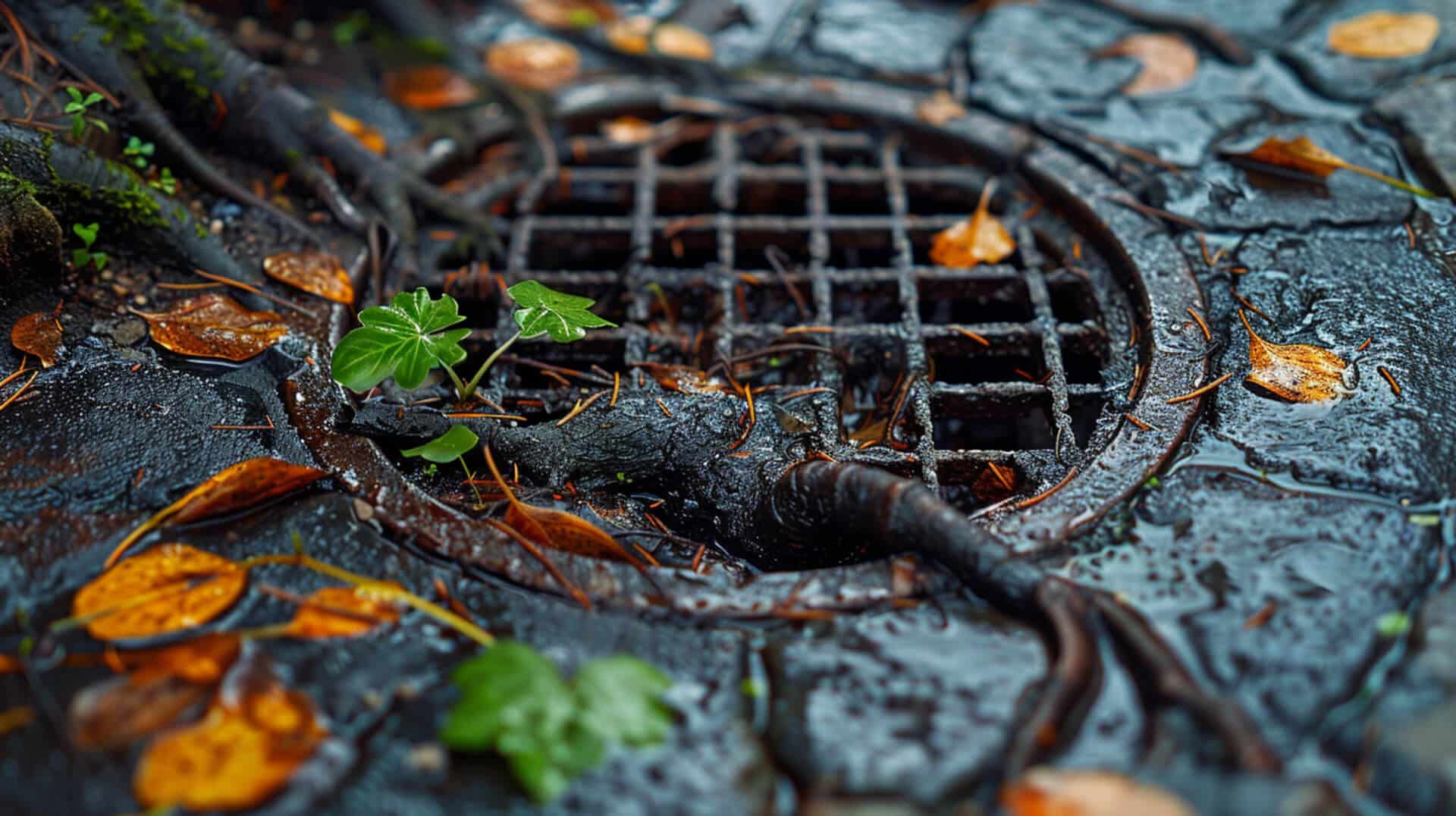
A Drain Root Intrusion Survey is a critical diagnostic tool designed to assess the health of underground drainage systems. These surveys are essential because tree roots, in search of moisture and nutrients, can infiltrate drainage pipes, causing blockages, structural damage, and reduced functionality.
The Impact of Tree Roots on Drainage Systems
Tree roots can exert significant pressure on drainage infrastructure, leading to cracks, misalignments, and eventual system failure. The intrusion of roots is a common problem, particularly in areas where the urban landscape intersects with natural growth.
Technologies Employed in Conducting Surveys
To identify these issues, professionals use advanced technologies such as Closed-Circuit Television (CCTV) Drain Surveys. This non-invasive technique involves inserting a camera into the drainage system to visually inspect the pipes’ condition, allowing for accurate diagnosis without disrupting the property.
Benefits of Early Detection for Property Management
For property owners, business owners, and facility managers, early detection through these surveys can prevent minor issues from escalating into costly repairs. By identifying root intrusion early, you can take proactive measures to address the problem, ensuring the longevity and reliability of your drainage system and potentially saving significant costs in long-term property maintenance.
Understanding the Impact of Tree Roots on Drainage Systems
Pathways of Root Intrusion into Drainage Pipes
Tree roots naturally seek out moisture and nutrients, which often leads them to the rich environment of underground drainage pipes. Small fissures or joints in the piping can allow fine root hairs to infiltrate, which then grow and expand within the pipe, causing blockages and other complications.
Types of Damage from Root Intrusion
Once inside, roots can cause a variety of issues. They may create blockages that disrupt water flow or accumulate debris leading to backups. Over time, the expanding roots can exert pressure on the pipe walls, potentially causing cracks or even complete pipe collapse, which can be costly to repair and may disrupt service.
Prevalence of Root Intrusion in Urban Areas
In urban and suburban settings, the close proximity of trees to the drainage infrastructure increases the likelihood of root intrusion. The extensive network of underground pipes in these areas provides multiple entry points for roots, making root intrusion a common and persistent problem.
Functional Impacts on Drainage Systems
Root intrusion can significantly reduce the efficiency of a drainage system. Blockages slow down water transit, while structural damage from roots can lead to leaks, which may cause soil erosion or create sinkholes. Moreover, compromised pipes can lead to unsanitary conditions if sewage is involved, posing health risks and necessitating immediate attention.
Common Problems Identified by Drain Root Intrusion Surveys
Indicators of Blockages Due to Root Intrusion
Drain Root Intrusion Surveys are critical in identifying blockages within drainage systems. These blockages often manifest as slow drainage, water backing up, or unexpected fluctuations in water levels in toilets and sinks. During a survey, professionals may also detect unusual noises, such as gurgling sounds from the plumbing system, which can indicate the presence of root masses obstructing the flow of water.
Structural Damage and Its Manifestations
Structural damage to pipes is a significant concern that these surveys aim to uncover. Such damage can appear as cracks or fractures in the pipes, which are often caused by the pressure and growth of tree roots within the drainage system. Over time, this can lead to misalignment of pipes, as roots displace the infrastructure, compromising the system’s integrity.
Consequences of Pipe Misalignment and Leakage
Misalignment of pipes, a common result of root intrusion, can disrupt the smooth operation of the drainage system, leading to inefficiencies and potential backups. Cracks and leaks, also consequences of root intrusion, can cause soil erosion, create sinkholes, and result in property damage. Moreover, leaks may lead to increased moisture around the foundation, which can attract more roots and exacerbate the problem.
By identifying these issues early, Drain Root Intrusion Surveys provide an opportunity for property owners to address problems before they escalate, ensuring the longevity and health of the drainage system.
Non-Invasive Techniques in Identifying Drainage Issues
The Functionality of CCTV Drain Surveys
CCTV Drain Surveys are a cornerstone of modern diagnostic techniques for inspecting drainage systems. Utilising specialised cameras, these surveys provide a live feed from inside the pipes, allowing for a detailed examination without excavation. This method is particularly effective in identifying root intrusion, as it can visualise the exact location and severity of blockages and structural damage.
Advantages of Non-Invasive Methods
Non-invasive methods are preferred in diagnosing drainage issues for several reasons. They minimise disruption to the property, avoid the costs associated with digging, and reduce the time needed to identify problems. Moreover, these methods are safer for both the technicians and the infrastructure, as they reduce the risk of causing further damage during the inspection process.
Additional Non-Invasive Diagnostic Tools
Beyond CCTV, other non-invasive techniques include sonar surveys and electromagnetic locators. These tools can detect variations in pipe material or density changes caused by root intrusion, offering another layer of diagnostic information without physical intervention.
Preservation of Property Integrity
By employing non-invasive techniques, professionals ensure the integrity of the property remains intact. These methods allow for a thorough investigation of the drainage system while maintaining the landscape and structural integrity of the surrounding area, ensuring that the property remains undisturbed.
The Role of Regular Maintenance in Preventing Root Intrusion
Frequency of Drainage System Inspections
Regular inspections are a key preventative measure against root intrusion in drainage systems. It is recommended that property owners schedule these inspections at least once every two years. However, if your property is known to have aggressive root growth or has experienced previous root intrusion issues, more frequent inspections may be necessary.
Preventative Maintenance Practices
To prevent blockages and leaks, maintenance practices should include the removal of visible root growth around pipe entry points, the clearing of debris from gutters and drain grates, and the flushing of the system to remove early-stage intrusions. Additionally, consider the use of root inhibitors that can discourage root growth near pipes.
Importance of Consistent Maintenance
Consistent maintenance is crucial for the long-term health of your drainage infrastructure. It helps to identify potential issues before they become severe, reducing the likelihood of costly repairs. Regular maintenance also ensures that the system operates efficiently, preventing unexpected disruptions.
Implementing Effective Maintenance Schedules
Property owners can implement effective maintenance schedules by keeping a record of inspections and maintenance activities. Engaging with professional services for regular check-ups can provide peace of mind and ensure that any interventions are timely and appropriate. By staying proactive, you can maintain the health of your drainage system and avoid the complications associated with root intrusion.
Selecting Qualified Professionals for Drain Root Intrusion Surveys
When you’re faced with potential root intrusion in your drainage system, selecting the right professional service is crucial. Here’s what to consider:
Criteria for Choosing Service Providers
Look for service providers with a proven track record in conducting Drain Root Intrusion Surveys. They should have the necessary certifications and accreditations, which are indicators of their expertise and adherence to industry standards. Additionally, ensure they have comprehensive insurance coverage to protect your property during the survey process.
Professional Approach to Resolving Drainage Issues
Experienced professionals use a systematic approach to diagnose and resolve issues identified during the survey. They typically start with a detailed assessment using CCTV technology, followed by recommending targeted solutions such as mechanical auguring, hydro jetting, or chemical treatments, depending on the severity of the intrusion.
Importance of Experience in Conducting Surveys
Choosing experienced professionals is important because they bring a depth of knowledge to the table. They can accurately interpret survey data, identify the root cause of issues, and provide effective, long-lasting solutions. Their experience also allows them to anticipate potential complications and act swiftly to prevent further damage.
Role of Professional Services in Drainage System Health
Professional services play a pivotal role in maintaining the health of your drainage system. They provide not only remediation but also guidance on preventive measures to avoid future issues. By entrusting your drainage concerns to qualified professionals, you ensure the longevity and reliability of your drainage infrastructure.
Components of a Drainage System and Their Vulnerabilities
Key Components of a Drainage System
A typical drainage system comprises pipes, traps, and vents, all of which work together to ensure efficient waste and stormwater drainage. Pipes transport water and waste, traps prevent sewer gases from entering the home, and vents allow air into the system to maintain proper pressure and facilitate flow.
Interaction of Tree Roots with Drainage Components
Tree roots can intrude into any part of the drainage system, but they commonly enter through joints in pipes, cracks, or damaged areas. Once inside, they can grow and obstruct the flow, causing a ripple effect of issues throughout the system.
Vulnerable Points in the System
The most vulnerable components to root intrusion are the pipes, particularly older clay or concrete pipes that may not be as resilient as modern materials. Joints and seals between pipes are also at risk, as they can be points of entry for roots seeking moisture.
Mitigating Vulnerabilities
To mitigate these vulnerabilities, regular inspections and maintenance are essential. This includes replacing old pipes with newer, more resistant materials, ensuring proper sealing of joints, and considering the use of root barriers. Strategic design and maintenance can significantly reduce the risk of root intrusion and protect the integrity of the drainage system.
Importance of Inspections for Early Problem Detection
Role of Inspections in Identifying Root Intrusion
Regular inspections are instrumental in the early detection of root intrusion within drainage systems. By utilising advanced diagnostic tools like CCTV drain surveys, professionals can identify the subtle signs of root intrusion that may not yet be evident on the surface. These inspections can reveal the initial stages of root growth into pipes, allowing for timely interventions.
Economic Advantages of Early Detection
Detecting drainage issues early through inspections can lead to significant cost savings. Addressing root intrusion promptly can prevent the escalation of damage, thereby avoiding the more substantial expenses associated with extensive repairs or complete pipe replacements. Early interventions can also prevent secondary damage to the property, further reducing potential costs.
Enhancing Property Value Through Inspections
Regularly scheduled inspections and maintenance of drainage systems can enhance property value. A well-maintained drainage system is a key selling point, as it assures potential buyers of the property’s sound infrastructure. Documentation of regular inspections can serve as proof of diligent maintenance, which is attractive to buyers and can justify a higher property valuation.
Uncovering Hidden Issues
Inspections can reveal issues that are not immediately obvious, such as slight misalignments in pipes, small cracks, or early-stage root penetration. These hidden problems, if left unchecked, can develop into more severe complications. Through inspections, property owners can gain a comprehensive understanding of the condition of their drainage systems and take proactive measures to maintain their functionality.
Strategic Measures Against Root Intrusion
Effective Techniques to Prevent Root Growth into Pipes
To safeguard your drainage system against root intrusion, several effective techniques can be employed. Regularly inspecting and maintaining the system is fundamental. Additionally, the use of root barriersimpermeable membranes installed around pipescan deter roots from encroaching on the drainage infrastructure.
The Role of Strategic Planting
Strategic planting involves selecting tree species with less aggressive root systems and planting them at a safe distance from drainage lines. This proactive measure can significantly reduce the risk of roots seeking out and infiltrating your pipes.
Utilising Root Barriers for Drainage Protection
Root barriers are a practical solution for protecting drainage systems. These barriers are designed to redirect root growth away from pipes, thus preventing the potential for intrusion and the subsequent blockages and structural damage that can occur.
Contributions of Proper Tree Care
Proper tree care, including regular pruning and health assessments by arborists, can limit root expansion and reduce the likelihood of roots impacting underground infrastructure. Healthy trees with well-managed root systems are less likely to cause problems for nearby pipes and drainage systems.
Environmental Considerations in Drain Root Intrusion Surveys
Aligning Surveys with Environmental Stewardship
Drain Root Intrusion Surveys, when conducted responsibly, align with the principles of environmental stewardship. These surveys can pinpoint the exact locations of root intrusion, allowing for targeted interventions that minimise ecological disruption. By avoiding unnecessary excavation and using non-invasive techniques, the surveys protect the surrounding ecosystem.
Adoption of Eco-Friendly Practices
In managing root intrusion, eco-friendly practices are paramount. These include using biodegradable chemicals for root control, employing water-conserving hydro jetting techniques, and ensuring any removed material is disposed of in an environmentally conscious manner. Property owners are encouraged to adopt these practices to mitigate the impact on the local environment.
Interaction with Urban Forestry
Urban forestry plays a crucial role in the health of drainage systems. The strategic selection and placement of trees can prevent root intrusion from occurring, while regular tree health assessments can identify potential risks early on. Collaboration with urban forestry experts can lead to a harmonious balance between green spaces and infrastructure.
Importance of Ecological Impact Consideration
Considering the ecological impact of root management methods is essential. It ensures that the actions taken to maintain drainage systems do not adversely affect the local flora and fauna. Sustainable root management practices contribute to the overall well-being of the environment, supporting biodiversity and reducing the carbon footprint.
Addressing Misconceptions and Challenges in Root Intrusion Management
Dispelling Common Myths
There are several misconceptions about managing root intrusion in drainage systems. One common myth is that small roots do not pose a significant threat to pipes. However, even the smallest roots can cause blockages and structural damage over time. Another misconception is that once roots are removed, the problem is solved permanently. In reality, without proper maintenance and preventive measures, roots can re-intrude.
Navigating Root Intrusion Challenges
Property owners can effectively navigate the challenges of root intrusion by staying informed and proactive. Regular inspections and maintenance are key to preventing root-related issues. Understanding the specific needs of your property’s landscape and drainage system can also guide effective management strategies.
Advancements in Root Intrusion Management
The latest advancements in root intrusion management include the use of trenchless repair technologies, which allow for the repair of pipes without extensive excavation. Additionally, new root-resistant pipe materials and joint seals are being developed to provide long-term solutions to root intrusion.
The Value of Professional Consultations
Professional consultations are invaluable for long-term management of root intrusion. Experts can offer tailored advice, conduct thorough inspections, and implement advanced solutions. Their expertise ensures that the interventions are not only effective but also sustainable, preserving the health of your drainage system for years to come.
Significance of Managing Drain Root Intrusion
Understanding and managing drain root intrusion is essential for maintaining the health of your property’s drainage system. Root intrusion can lead to a multitude of problems, including blockages, structural damage, and leaks, which can compromise the system’s functionality and lead to costly repairs.
Proactive Measures and Cost Savings
A proactive approach to managing root intrusion involves regular inspections and maintenance, which can prevent minor issues from escalating into major problems. By addressing root intrusion early, you can save on the costs associated with extensive repairs and preserve the integrity of your infrastructure.
Key Considerations for Property Management
For property owners, business owners, and facility managers, the key takeaways include recognising the signs of root intrusion, understanding the importance of regular maintenance, and the value of professional services. Being informed about the potential risks and solutions can lead to more effective management of your drainage system.
Role of Education and Professional Services
Continued education on the latest techniques and advancements in root intrusion management is crucial. Engaging with professional services ensures that your drainage system is evaluated and cared for by experts, providing peace of mind and contributing to the long-term health of your property’s infrastructure.

